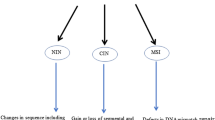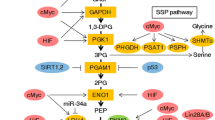Abstract
Gemcitabine (GEM) is the drug used as first line to treat pancreatic cancer, one of the most devastating human tumors. This peculiar type of tumor develops resistance to several drugs, including GEM, due to its desmoplastic reaction and other features. The GEM chemoresistance has been investigated at molecular level aiming to find a pathway whose inhibition or activation should overcome it. Through next-generation sequencing was performed a chemogenomic assay of GEM using Saccharomyces cerevisiae as model cell and the results showed that more than 40% of genes related to GEM response in yeast possess unknown or dubious function. We choose two yeast mutants to individually validate the fitness defect results observed by chemogenomic assay, Δhmt1 and Δcsi1, and it was found that in addition to some already described pathways involved in GEM resistance, cells deficient in deneddylation enzyme Cop9 Signalosome Interactor 1 (Csi1p) presented a high sensitivity to GEM. This was confirmed by individual growth analyses of Δcsi1 cells exposed to GEM, and this phenotype was reverted with CSI1 complementation gene. Csi1p is a well-characterized homolog equivalent to human Csn6 subunit of COP9 signalosome (CSN) involved in deneddylation process. We highlighted too that epigenetic alterations, such as methylation mediated by protein arginine methyltransferase 1, play an important role in regulating gemcitabine treatment resistance. Our results point out new unexplored molecular pathways that can be used to overcome GEM resistance: the inhibition of CSN and the arginine methyltransferase activities.




Similar content being viewed by others
References
Bilimoria KY, Bentrem DJ, Ko CY, Ritchey J, Stewart AK, Winchester DP, Talamonti MS (2007) Validation of the 6th edition AJCC pancreatic cancer staging system: report from the national cancer database. Cancer 110:738–744. https://doi.org/10.1002/cncr.22852
Muñoz AR, Chakravarthy D, Gong J, Halff GA, Ghosh R, Kumar AP (2017) Pancreatic cancer: current status and challenges. Curr Pharmacol Rep 3:396–408. https://doi.org/10.1007/s40495-017-0112-3
Neesse A, Michl P, Frese KK, Feig C, Cook N, Jacobetz MA, Lolkema MP, Buchholz M, Olive KP, Gress TM, Tuveson DA (2011) Stromal biology and therapy in pancreatic cancer. Gut 60:861–868. https://doi.org/10.1136/gut.2010.226092
Giovannetti E, Del Tacca M, Mey V, Funel N, Nannizzi S, Ricci S, Orlandini C, Boggi U, Campani D, Del Chiaro M, Iannopollo M, Bevilacqua G, Mosca F, Danesi R (2006) Transcription analysis of human equilibrative nucleoside transporter-1 predicts survival in pancreas cancer patients treated with gemcitabine. Cancer Res 66:3928–3935. https://doi.org/10.1158/0008-5472.CAN-05-4203
Ohhashi S, Ohuchida K, Mizumoto K, Fujita H, Egami T, Yu J, Toma H, Sadatomi S, Nagai E, Tanaka M (2008) Down-regulation of deoxycytidine kinase enhances acquired resistance to gemcitabine in pancreatic cancer. Anticancer Res 28:2205–2212
Ohtaka K, Kohya N, Sato K, Kitajima Y, Ide T, Mitsuno M, Miyazaki K (2008) Ribonucleotide reductase subunit M1 is a possible chemoresistance marker to gemcitabine in biliary tract carcinoma. Oncol Rep 20:279–286
Duxbury MS, Ito H, Zinner MJ, Ashley SW, Whang EE (2004) RNA interference targeting the M2 subunit of ribonucleotide reductase enhances pancreatic adenocarcinoma chemosensitivity to gemcitabine. Oncogene 23:1539–1548
De Sousa CL, Monteiro G (2014) Gemcitabine: metabolism and molecular mechanisms of action, sensitivity and chemoresistance in pancreatic cancer. Eur J Pharmacol 741:8–16
Skrypek N, Duchêne B, Hebbar M, Leteurtre E, van Seuningen I, Jonckheere N (2013) The MUC4 mucin mediates gemcitabine resistance of human pancreatic cancer cells via the concentrative nucleoside transporter family. Oncogene 32:1714–1723
de Sousa GF, Lima MA, Custodio DF, Freitas VM, Monteiro G (2015) Chemogenomic study of carboplatin in Saccharomyces cerevisiae: inhibition of the NEDDylation process overcomes cellular resistance mediated by HuR and cullin proteins. PLoS One 10:e0145377
Oliveira ÉA, Lima DS, Cardozo LE, Souza GF, de Souza N, Alves-Fernandes DK, Faião-Flores F, Quincoces JAP, Barros SBM, Nakaya HI, Monteiro G, Maria-Engler SS (2017) Toxicogenomic and bioinformatics platforms to identify key molecular mechanisms of a curcumin-analogue DM-1 toxicity in melanoma cells. Pharmacol Res 125:178–187. https://doi.org/10.1016/j.phrs.2017.08.018
Dos Santos SC, Teixeira MC, Cabrito TR, Sá-Correia I (2012) Yeast toxicogenomics: genome-wide responses to chemical stresses with impact in environmental health, pharmacology, and biotechnology. Front Genet 3:63–78
Hoon S, Smith AM, Wallace IM et al (2008) An integrated platform of genomic assays reveals small-molecule bioactivities. Nat Chem Biol 4:498–506
Smith AM, Heisler LE, Mellor J, Kaper F, Thompson MJ, Chee M, Roth FP, Giaever G, Nislow C (2009) Quantitative phenotyping via deep barcode sequencing. Genome Res 19:1836–1842
St Onge R, Schlecht U, Scharfe C, Evangelista M (2012) Forward chemical genetics in yeast for discovery of chemical probes targeting metabolism. Molecules 17:13098–13115
Smith AM, Ammar R, Nislow C, Giaever G (2010) A survey of yeast genomic assays for drug and target discovery. Pharmacol Ther 127:156–164
Pierce SE, Davis RW, Nislow C, Giaever G (2009) Chemogenomic approaches to elucidation of gene function and genetic pathways. Methods Mol Biol 548:115–143
Smith RN, Aleksic J, Butano D, Carr A, Contrino S, Hu F, Lyne M, Lyne R, Kalderimis A, Rutherford K, Stepan R, Sullivan J, Wakeling M, Watkins X, Micklem G (2012) InterMine: a flexible data warehouse system for the integration and analysis of heterogeneous biological data. Bioinformatics 28:3163–3165
Maytal-Kivity V, Piran R, Pick E, Hofmann K, Glickman MH (2002) COP9 signalosome components play a role in the mating pheromone response of S. cerevisiae. EMBO Rep 3:1215–1221
Wong N, Yeo W, Wong WL, Wong NL, Chan KY, Mo FK, Koh J, Chan SL, Chan AT, Lai PB, Ching AK, Tong JH, Ng HK, Johnson PJ, To KF (2009) TOP2A overexpression in hepatocellular carcinoma correlates with early age onset, shorter patients survival and chemoresistance. Int J Cancer 124:644–652
Xin D, Rendon BE, Zhao M, Winner M, McGhee Coleman A et al (2010) The MIF homologue D-dopachrome tautomerase promotes COX-2 expression through β-catenin-dependent and -independent mechanisms. Mol Cancer Res 8:1601–1609
Schütz AK, Hennes T, Jumpertz S, Fuchs S, Bernhagen J (2012) Role of CSN5/JAB1 in Wnt/β-catenin activation in colorectal cancer cells. FEBS Lett 586:1645–1651
Lee YH, Judge AD, Seo D, Kitade M, Gómez-Quiroz LE, Ishikawa T, Andersen JB, Kim BK, Marquardt JU, Raggi C, Avital I, Conner EA, MacLachlan I, Factor VM, Thorgeirsson SS (2011) Molecular targeting of CSN5 in human hepatocellular carcinoma: a mechanism of therapeutic response. Oncogene 30:4175–4184
Li J, Wang Y, Yang C, Wang P, Oelschlager DK, Zheng Y, Tian DA, Grizzle WE, Buchsbaum DJ, Wan M (2009) Polyethylene glycosylated curcumin conjugate inhibits pancreatic cancer cell growth through inactivation of Jab1. Mol Pharmacol 76:81–90
Fukumoto A, Ikeda N, Sho M, Tomoda K, Kanehiro H, Hisanaga M, Tsurui Y, Tsutsumi M, Kato JY, Nakajima Y (2004) Prognostic significance of localized p27Kip1 and potential role of Jab1/CSN5 in pancreatic cancer. Oncol Rep 11:277–284
Ito K, Liu Q, Salto-Tellez M, Yano T, Tada K, Ida H, Huang C, Shah N, Inoue M, Rajnakova A, Hiong KC, Peh BK, Han HC, Ito T, Teh M, Yeoh KG, Ito Y (2005) RUNX3, a novel tumor suppressor, is frequently inactivated in gastric cancer by protein mislocalization. Cancer Res 65:7743–7750
Li J, Gu Z, Li S, Xiao Z, Sun K (2015) Reverse correlation of Jab1 and Smad4 in PANC-1 cells involved in the pathogenesis of pancreatic cancer. Int J Clin Exp Pathol 8:9279–9285
Lim SO, Li CW, Xia W, Cha JH, Chan LC, Wu Y et al (2016) Deubiquitination and stabilization of PD-L1 by CSN5. Cancer Cell 30:925–939
Esteva FJ, Sahin AA, Rassidakis GZ, Yuan LX, Smith TL, Yang Y, Gilcrease MZ, Cristofanilli M, Nahta R, Pusztai L, Claret FX (2003) Jun activation domain binding protein 1 expression is associated with low p27(Kip1) levels in node-negative breast cancer. Clin Cancer Res 9:5652–5659
Zhao Y, Morgan MA, Sun Y (2014) Targeting neddylation pathways to inactivate cullin-ring ligases for anticancer therapy. Antioxid Redox Signal:1–18
Liu G, Claret FX, Zhou F, Pan Y (2018) Jab1/COPS5 as a novel biomarker for diagnosis, prognosis, therapy prediction and therapeutic tools for human cancer. Front Pharmacol 9:1–15
Jumpertz S, Bernhagen J, Schütz AK (2015) Role of the COP9 signalosome in gastrointestinal cancers. J Carcinogen Mutagen 6:1–12
Wang L, Zheng JN, Pei DS (2016) The emerging roles of Jab1/CSN5 in cancer. Med Oncol 33:90
Li H, Zhou W, Li L, Wu J, Liu X, Zhao L, Jia L, Sun Y (2017) Inhibition of Neddylation modification sensitizes pancreatic cancer cells to gemcitabine. Neoplasia 19:509–518
Sun HL, Liu YN, Huang YT, Pan SL, Huang DY, Guh JH, Lee FY, Kuo SC, Teng CM (2007) YC-1 inhibits HIF-1 expression in prostate cancer cells: contribution of Akt/NF-kappaB signaling to HIF-1alpha accumulation during hypoxia. Oncogene 26:3941–3951
van Uden P, Kenneth NS, Rocha S (2008) Regulation of hypoxia-inducible factor-1alpha by NF-kappaB. Biochem J 412:477–484
Bae MK, Ahn MY, Jeong JW, Bae MH, Lee YM, Bae SK, Park JW, Kim KR, Kim KW (2002) Jab1 interacts directly with HIF-1alpha and regulates its stability. J Biol Chem 277:9–12
Bech-Otschir D, Kraft R, Huang X, Henklein P et al (2001) COP9 signalosome-specific phosphorylation targets p53 to degradation by the ubiquitin system. EMBO J 20:1630–1639
Ravi R, Mookerjee B, Bhujwalla ZM, Sutter CH, Artemov D, Zeng Q, Dillehay LE, Madan A, Semenza GL, Bedi A (2000) Regulation of tumor angiogenesis by p53-induced degradation of hypoxia-inducible factor 1alpha. Genes Dev 14:34–44
Iwakuma T, Lozano G (2003) MDM2, an introduction. Mol Cancer Res 1:993–1000
Hsu M-C, Pan M-R, Chu P-Y, Tsai Y-L, Tsai C-H, Shan Y-S, Chen L-T, Hung W-C (2019) Protein arginine methyltransferase 3 enhances chemoresistance in pancreatic cancer by methylating hnRNPA1 to increase ABCG2 expression. Cancers 11:1–18
Wang Y, Hsu JM, Kang Y, Wei Y, Lee PC, Chang SJ, Hsu YH, Hsu JL, Wang HL, Chang WC, Li CW, Liao HW, Chang SS, Xia W, Ko HW, Chou CK, Fleming JB, Wang H, Hwang RF, Chen Y, Qin J, Hung MC (2016) Oncogenic functions of gli1 in pancreatic adenocarcinoma are supported by its PRMT1-mediated methylation. Cancer Res 76:7049–7058
Funding
This research was supported by grants from State of São Paulo Research Foundation (FAPESP/Brazil), process number 2009/01303-1, 2015/07749-2 and 2011/04938-8. The authors also would like to thank the National Postdoctoral Program (PNPD/Capes - FCF-USP) [Award Number 1781837]. G. M. received a Productivity Fellowship from the Brazilian National Counsel of Technological and Scientific Development (CNPq 309595/2016-9).
Author information
Authors and Affiliations
Corresponding author
Ethics declarations
Conflict of interest
The authors declare that they have no conflict of interest.
Additional information
Responsible Editor: Celia Maria de Almeida Soares.
Publisher’s note
Springer Nature remains neutral with regard to jurisdictional claims in published maps and institutional affiliations.
Electronic supplementary material
ESM 1
(PDF 282 kb)
Rights and permissions
About this article
Cite this article
de Sousa Cavalcante, L., Costa-Silva, T.A., Souza, T.A. et al. Chemogenomic study of gemcitabine using Saccharomyces cerevisiae as model cell—molecular insights about chemoresistance. Braz J Microbiol 51, 489–496 (2020). https://doi.org/10.1007/s42770-019-00154-7
Received:
Accepted:
Published:
Issue Date:
DOI: https://doi.org/10.1007/s42770-019-00154-7




